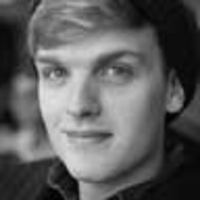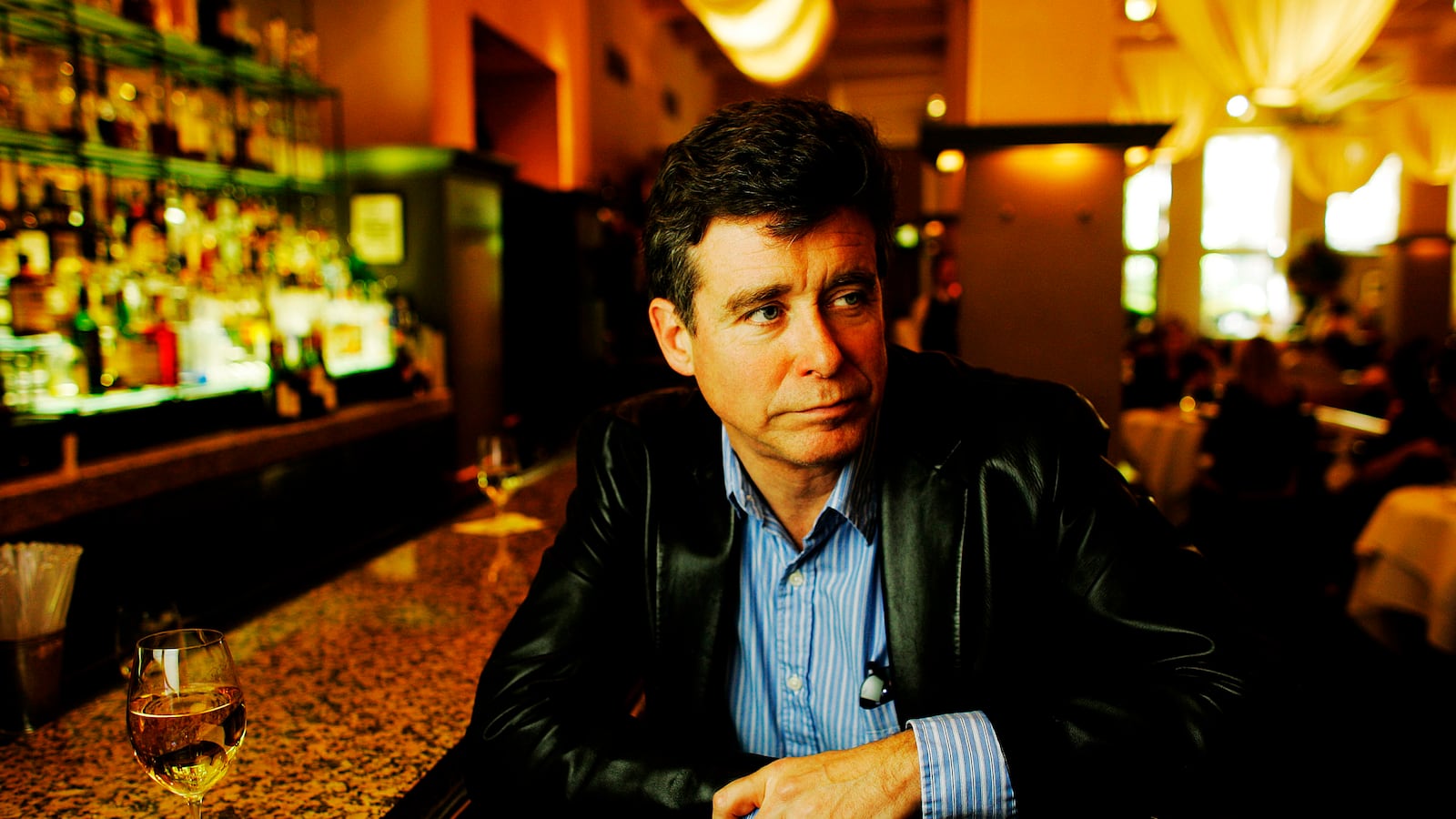Since the publication of Bright Lights, Big City in 1984, Jay McInerney has been inextricably linked with New York—and he remains a fixture of the city’s literary landscape. The success of his debut novel, set around experiences in New York, led his life in the city to be chronicled way beyond most other writers.

Now more than 10 books and nearly 30 years later, McInerney and his relationship with the city have changed. Although he contributes a regular wine column for The Wall Street Journal, (recently gathered in a collection entitled The Juice) he has dialed down his pubic profile, while continuing to work on fiction, often set in New York.
Could you describe the area of New York that you live in?
I live in Greenwich Village, in downtown Manhattan. Traditionally it was a fairly bohemian, literary area. Playwright Eugene O’Neill lived a few blocks from where I live now. Mark Twain lived on 10th Street. I live on 9th Street. You know, Greenwich Village was the traditional bohemia of New York. I wish I could say that was entirely true now. It’s, uh...changed. It’s now got, God help us, investment bankers and journalists, but it’s still a very beautiful part of New York. It’s a little more European than some other parts.
Have you always lived in the Village?
Most of the time, yeah. I’ve lived in New York about 30 years now and probably about 20 of them have been in the Village. I’ve moved around a bit, briefly to the Upper West Side. I even tried the Upper East Side after my kids were born. The tradition is that you have to move to the Upper East Side once you have kids, because that’s where the schools are. But really, most of the time I’ve spent in Greenwich Village.
Are there specific places you go to buy books?
Well, there were always a lot of bookstores in my area. The two bookstores that I use; first is The Strand, on Broadway and 12th Street, a very short walk from my home. The Strand is just an incredible institution, it’s four floors of books. You can get lost in there. The other place I like for my books is very tiny, it’s one small room—it’s actually the first place in New York where I ever gave a reading, with Raymond Carver, many years ago in ’84—and that’s called Three Lives. I guess it’s named after that Gertrude Stein book. It’s a teeny bookstore devoted almost entirely to literary fiction. Again, it’s just a short walk, in the other direction, from my apartment.
Do you venture anywhere other than your apartment to read or to write?
Yeah, sometimes I go to this little Italian place around the corner called Otto to read or to do proofs. Its kind of a café, pizza place on 8th Street and 5th Avenue, and I like it because it has a sort of European café feeling during the day and it gets very crowded at dinner time. The only other place I go is Soho House, which is something we imported from London. It’s a club in the meat-packing district. Strangely a lot of writers seem to hang out there. Sometimes, during the day, I go there with my computer, just to get out of the apartment. I don’t know, I see other writers, get coffee and drinks. Shoot a little pool in-between writing.
How important is it, in your process, to mix with other writers and share those kinds of conversations?
Well, it is nice to see other writers once in a while. But, basically, writing is a very solitary activity and a very isolating one. Sometimes, that’s a good thing, but once in a while you do need to talk to your peers and see what they’re doing. That’s one of the great advantages of being a New York writer; you have a lot of company. You might not always know where they are and they might not be in the immediate vicinity, but there are certainly more writers in Manhattan than there are anywhere else in America, I think.
You know, in my case, it’s also my subject matter usually. So I can’t really imagine being anywhere else, because I write so often about New York and its inhabitants.
Yes, well, that’s my next question really. I don’t want to ask how it has affected your work because, in a lot of ways, New York is your work, but could you imagine writing without also living in New York? Because, it’s often difficult to pull the two of you apart…
I don’t think I found my voice until I reached New York. I suppose it’s possible I would have had some kind of different literary career if I had not discovered New York. I mean, I’d visited New York as a kid and I actually lived in the suburbs briefly when I was in high school, but when I arrived in New York as a full-time resident, when I was 21, I instantly felt I had found, not only my home, but also my subject matter. I just loved the energy of New York, I loved the way in which the streets and sidewalks and restaurants and cafés were stages on which I could witness this frenetic human activity. I loved the mix of people because New York has always been a city of immigrants. Most of the people I write about have been ambitious outlanders who have been attracted to New York from other parts of the world. I just fell in love with it almost immediately.
Although, I think it took a while for me to think, ‘Hey, you know, I should write about this.’ First, I had to find my bearings. It was a little overwhelming.
How is the city different to the one you first started writing about?
It has changed a great deal, obviously. Change is the only constant in New York, really. A lot has changed since I first moved here, it used to be a city on the brink. There was some question about whether it was going to survive and prosper or whether it was going to continue in this spiral of urban decay and decline. The city almost, literally, went bankrupt in 1977. There was a lot of white, middle-class flight from the city in the ’70s. There was a heroin epidemic. Crime was rampant, and there was some question as to whether the whole municipal system could really handle the pressures at its core, the criminals and the education system, at a time when the likeliest taxpayers were fleeing to the suburbs.
So when I arrived there in 1980, there was a certain, sort of, suspense about which way New York was going to go. But at the same time it was incredibly exciting because it was a time of great experimentation and great energy in terms of the arts community. Punk rock had been more or less invented on the Lower East Side, a few years prior to my arriving. When I did arrive, you could still hear bands like Blondie and the Ramones playing at CBGB. There was a really vibrant, underground nightclub scene in downtown Manhattan, and it was a center for all kinds of artistic enterprises and artistic characters. There was a real renaissance for painting, with people like Julian Schnabel and Cindy Sherman and Robert Longo. These people were all hanging around the Mudd Club with Lou Reed and Andy Warhol. It was a really interesting moment to arrive in the city.
The problem is, the New York that I arrived in was much more edgy and dangerous and less prosperous than the post-Giuliani New York. On the one hand, you can say it’s much safer—I mean, you’re much less likely to get mugged on the street. But at the same time, I miss some of the improvisational energy. The sense that anything could happen. Now the rents are so much higher, people are less likely to open an experimental gallery space in the middle of Manhattan, so they tend to go to Brooklyn. A young ballet dancer, or a young poet may do the same thing. The problem with that is that it represents a sort of decentralization. The whole point of a bohemia is that people congregate in a relatively well-defined area. Recently, there is diaspora of the artistic community around various neighborhoods of Brooklyn. In my day, the most interesting people you would want to know in New York, from an artistic point of view, were all living in downtown Manhattan.
For writers in particular, would you say it was a more productive time then? Almost because the environment you were living in was less channeled toward productivity and more focused on, say, experimentation?
I’m not sure. Nothing was organized then. I suppose what you could say is, and I’m sure many younger writers would appreciate this, is that it’s a much more organized community. There are poetry readings, literary organizations, there’s a whole social structure and infrastructure, which makes the literary community a much more tangible thing. When I first came to New York, there was George Plimpton, the editor of The Paris Review, who used to have parties at his townhouse. Now, that was the only way in which there was any gathering spot for the literary community. Otherwise, it was very ad hoc. We’d occasionally convene in downtown nightclubs. I think that the Manhattan literary community is, in some ways, thriving now as never before, but I just miss some of the grit and the edge of the downtown scene of the ’80s.
Do you have any favorite works of literature that are set in New York?
Well, certainly, there’s Catcher in the Rye. I very much like the novels of Dawn Powell, who’s not terribly well known these days. She’s a great satirical writer. Then, of course, F. Scott Fitzgerald wrote very movingly in several of his books about Manhattan in the ’20s. I remain a fan of my friend Bret Easton Ellis's American Psycho. I think as a book about New York in the ’80s it was pretty excellent.
And are you working on anything at the moment?
I’m working on a novel that is, once again, set in New York. It’s a third installment in a trilogy written about a married couple living in Manhattan. The first book being Brightness Falls, which was published in ’92 and the second one being The Good Life, published in 2006. It’s a continuation of the story of this couple and their friends. Most of it is set in downtown Manhattan.
So there are similar kinds of themes?
Yeah: marriage, fidelity, career, and the social history of New York. It begins on Election Day 2004 and ends on Election Day 2008. I’m still working on it and I’ll finish it early next year, I hope.
More Literary Cities:






